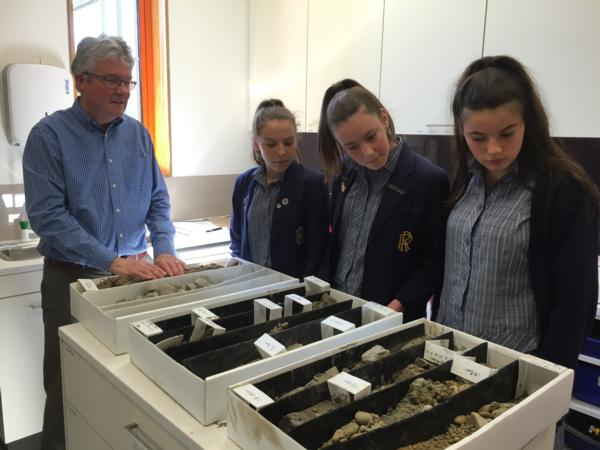Core Samples Provide Unique Opportunity For Rangi Students
In October 2014, Tonkin and Taylor presented Rangi Ruru Girls’ School with five boxes of core samples from land underneath the new Science Centre which opened in April 2014.
The samples were of 20 metres of rock, silt sand and gravel and were in ‘horizontal’ boxes. Head of Physics at Rangi Ruru, Keith Machin says it was an exciting gift but there was a conundrum as to how the school could display them?
“At the end of last year, I approached Rob Spiers, a technician who works in the Department of Geological Sciences at the University of Canterbury and we did some research into how we could set up a display,” says Keith.
Mr Machin says they planned to set up a display near the seismometer which was installed in the Science Building late last year. He explains:
“Rob was keen to progress this by setting up a trial before we used the actual core samples. We made a vertical scale model of 1:10 as we have 20 metres of samples and therefore the tube would be 2 metres in height. Rob asked Dr Anekant Wandres from the Geology Department at Canterbury University, to help with the display and they both came to school and discussed the proposal with the school principal Julie Moor and the rest of the management team on February 17th. It was agreed that we should go ahead. Rob has worked hard to iron out a few problems with the display, spending a considerable amount of time to make sure he gets it right; he’s a perfectionist! Having now worked out the best solution, we put the display together this weekend just gone (21st and 22nd of November) and the official hand over of the display will be this Tuesday morning.”
Keith Machin says displaying these core samples provides Rangi Ruru students with a unique opportunity.
“We can teach our girls what is right underneath their feet as an excellent resource to learn more about Earth Science and specifically how these samples relate to their city and the ground above which we live,” he says.
ENDS

